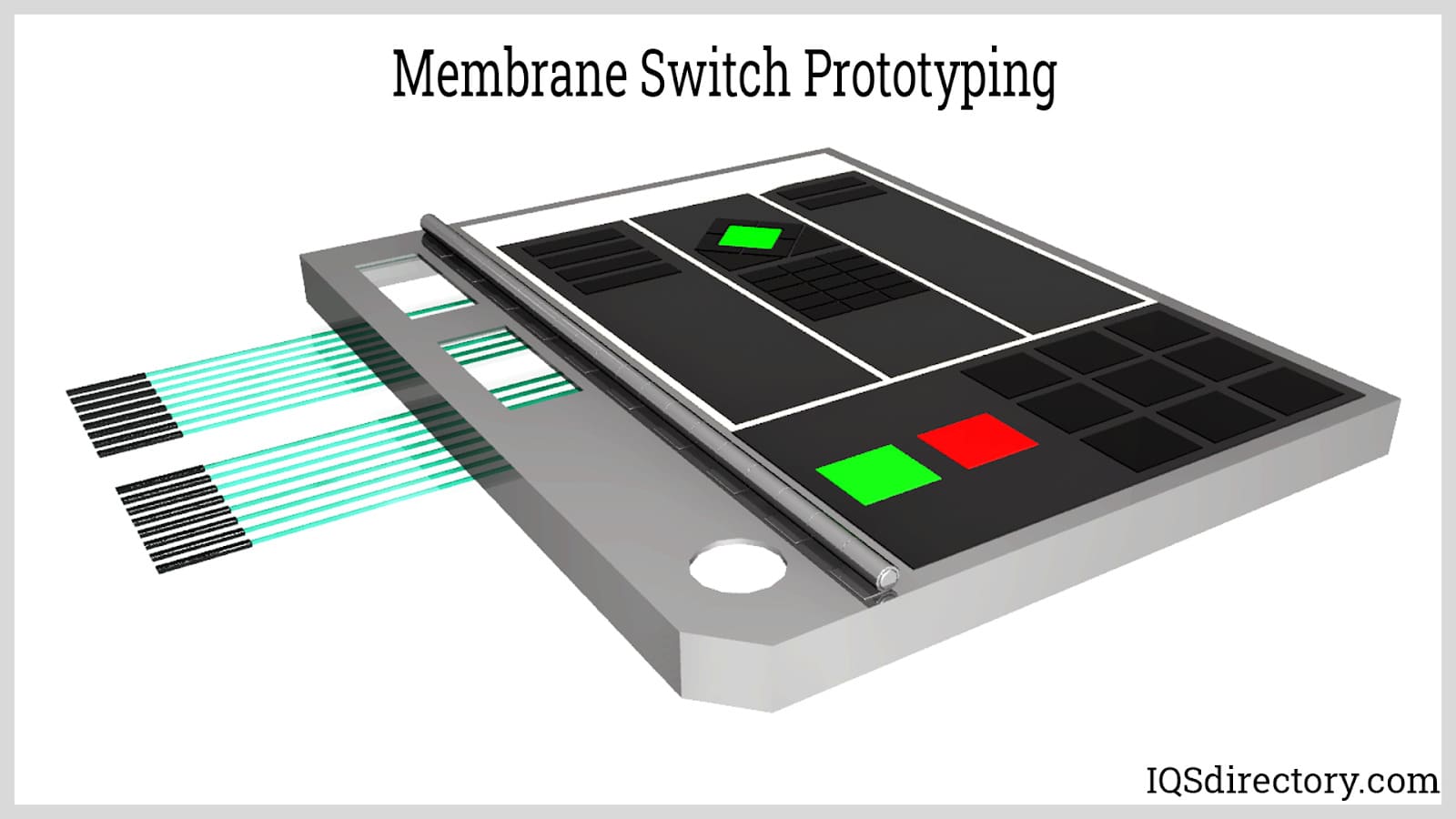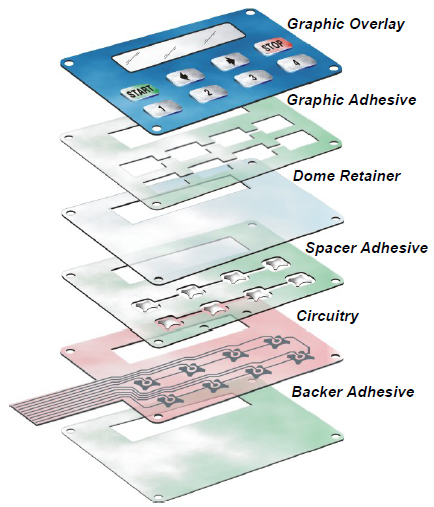An creative membrane switch manufacturer can provide next-gen features and materials.
An creative membrane switch manufacturer can provide next-gen features and materials.
Blog Article
Everything About Membrane Layer Change: Understanding Its Layout and Performance
When you believe regarding the control user interfaces in modern gadgets, membrane layer switches often come to mind. Let's discover what sets membrane switches over apart from various other control systems.
What Are Membrane Buttons?

Membrane layer buttons can likewise be personalized pertaining to shape, size, and graphics, allowing makers to produce unique user interfaces customized to particular products. In general, membrane switches play a substantial function in enhancing user experience across a vast variety of applications.
Exactly How Membrane Layer Changes Work
When you push a key on a membrane button, it turns on an uncomplicated yet reliable device. The leading layer, often constructed from versatile product, pushes down onto a conductive layer beneath it. This action bridges the gap in between conductive traces, completing an electric circuit. As quickly as the circuit closes, it sends out a signal to the device's controller, which translates your input.
You'll observe that the responsive feedback differs based on the switch layout, offering either a soft click or a more pronounced action. Once you launch the secret, the membrane go back to its original setting, resuming the circuit and quiting the signal. This process happens nearly instantly, ensuring a responsive customer experience.
Membrane buttons are preferred due to their longevity and resistance to dust and moisture, making them ideal for different applications, from family home appliances to clinical gadgets. Recognizing this operation helps you appreciate their prevalent use.
Key Parts of Membrane Layer Buttons
Comprehending the essential parts of membrane layer switches is essential for realizing their capability and layout. The safety layer shields versus environmental factors and use, extending the button's life expectancy. By understanding these parts, you'll acquire understanding into just how membrane switches over operate and their importance in various applications.
Products Used in Membrane Layer Switch Design
The efficiency and durability of membrane layer switches heavily depend on the materials made use of in their layout. You commonly come across polyester and polycarbonate as primary substrates as a result of their outstanding toughness and adaptability. These materials resist scratches and chemicals, making them perfect for requiring environments.
The conductive layers typically use silver or carbon, picked for their reliability and conductivity. membrane switch manufacturer. Silver supplies superior performance, while carbon is a cost-efficient alternative. For the overlay, you may take into consideration a matte or glossy surface, relying on your visual needs and customer experience
Adhesives play a vital role also; they bond layers safely and guarantee long life. Ensure to choose adhesives that withstand environmental aspects like temperature level and moisture. Don't ignore the importance of a great printing strategy for graphics, as it boosts both capability and visual charm. Picking the ideal products will certainly guarantee your membrane button stands the test of time.
Layout Considerations for Membrane Buttons
While developing membrane layer buttons, it's crucial to take right into account different factors that influence their capability and customer experience. Begin by concentrating on the layout and switch dimension; make navigate here sure they're instinctive and easy to navigate. Think about the tactile comments you wish to supply-- will individuals require a recognizable click or a softer touch? Additionally, think of the products you'll utilize, as they'll impact longevity and aesthetic appeals.
Do not overlook the graphic style; clear labeling and color comparison are substantial for presence. Verify your layout accommodates ecological variables, like dampness or temperature variants, which could impact efficiency. Lastly, bear in mind the significance of screening models with genuine individuals to collect feedback and make essential changes. This iterative process assists you fine-tune the style, confirming it fulfills both practical and visual requirements successfully. By carefully considering these aspects, you'll create a membrane button that boosts functionality and satisfaction.
Applications of Membrane Layer Switches
Membrane layer buttons are versatile elements found in different applications, from commercial equipment to consumer electronic devices. You'll see their influence in devices that require durable user interfaces and in devices that profit from streamlined designs. Comprehending these applications helps you value the capability and functionality of membrane layer buttons in everyday modern technology.
Industrial Equipment Usage
When you're looking to enhance the performance of commercial tools, membrane buttons supply a trusted remedy that incorporates sturdiness with straightforward style. These buttons are perfect for harsh atmospheres, providing resistance to dirt, moisture, and chemicals. Embrace membrane buttons to streamline your operations and improve general performance.
Customer Electronic Devices Assimilation
In the domain name of customer electronic devices, membrane layer switches play a necessary function in enhancing individual communication and device performance. Membrane switches additionally ensure longevity and resistance to dust and dampness, expanding the life-span of your electronics. By choosing membrane buttons, you improve not just the capability but additionally the design of your tools, making day-to-day interactions smooth and enjoyable.
Benefits and Downsides of Membrane Layer Switches
While membrane layer switches use a variety of benefits, they additionally come with some downsides that you need to think about. One significant advantage is their small design, making them excellent for space-constrained applications. They're likewise cost-efficient, supplying a durable service with a reduced manufacturing expense. Additionally, their seamless surface is very easy to clean, boosting health in environments like hospitals.

Membrane buttons can have a shorter life-span contrasted to mechanical switches, especially under heavy usage. They can also be less tactile, which could impact user comments throughout procedure. Balancing these pros and cons will certainly assist you identify if membrane buttons are the best fit for your job.
Frequently Asked Inquiries
The Length Of Time Do Membrane Layer Switches Commonly Last?
Membrane changes membrane switch manufacturer commonly last between 5 to 10 years, depending on usage and ecological problems. You'll intend to evaluate aspects like wear, direct exposure to dampness, and temperature variations to gauge their longevity successfully.
Can Membrane Layer Changes Be Personalized for Certain Designs?
Yes, you can customize membrane layer switches to fit certain layouts (membrane switch manufacturer). You'll have the flexibility to pick colors, shapes, and layouts that match your project's needs, guaranteeing they mix seamlessly with your general aesthetic
What Is the Expense Array for Membrane Layer Switch Over Production?
The price variety for membrane layer button manufacturing generally falls between $1 and $10 each, depending upon elements like layout intricacy, quantity, and materials. You can obtain quotes from manufacturers to locate the very best choice.

Are Membrane Changes Water-proof or Immune?
Membrane click to investigate switches can be designed to be water resistant or immune, depending on materials made use of and building and construction methods. If you require them for wet atmospheres, guarantee you specify those needs throughout the design process.
How Do Membrane Changes Compare to Traditional Buttons?
Membrane layer switches are normally thinner and a lot more adaptable than conventional switches, providing a streamlined design. They're usually much easier to clean and integrate, yet may not provide the responsive feedback you're utilized to with mechanical alternatives.
Final thought

Report this page